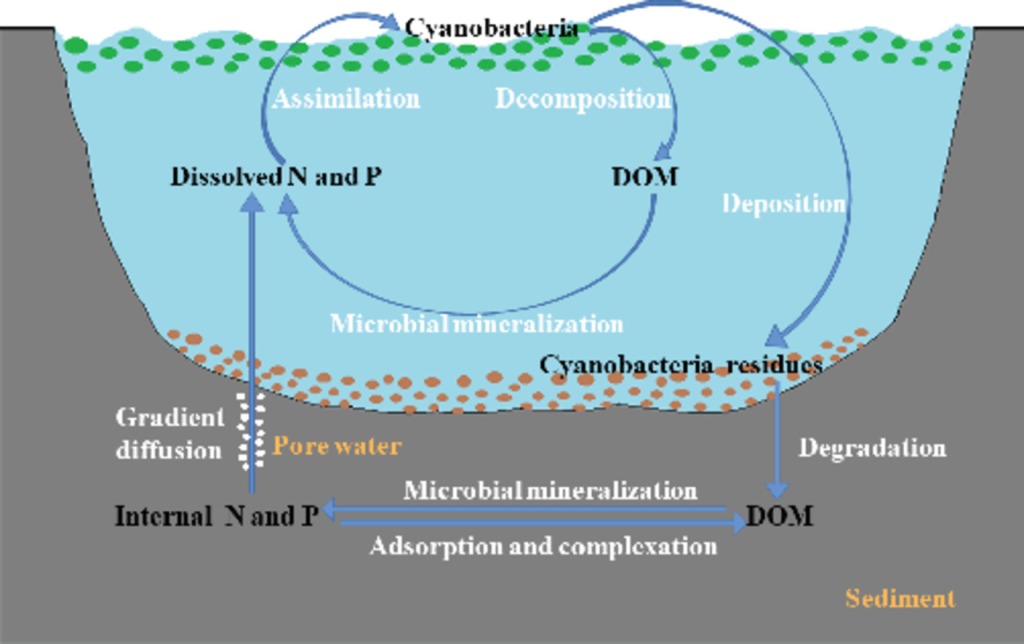
Authors
Yan Bao, Tao Huang, Chengwu Ning, Tingting Sun, Pengliang Tao, Jie Wang, Qingye Sun
The seasonal changes in dissolved organic matter (DOM), and its correlation with the release of internal nutrients during the annual cycle of cyanobacteria in the eutrophic Lake Chaohu, China, were investigated from four sampling periods between November 2020 and July 2021. The DOM fluorescence components were identified as protein-like C1, microbial humic-like C2, and terrestrial humic-like C3. The highest total fluorescence intensity (FT) of DOM in sediments during the incubation stage is due to the decomposition and degradation of cyanobacteria remains. The lowest humification of DOM and the highest proportion of C1 in waters during the initial cyanobacterial growth indicate that fresh algae are the main source. The highest molecular weight of DOM and FT of the C2 in sediments during cyanobacterial outbreaks indicate the concurrent deposition of undegraded cyanobacterial remains and microbial degradation. The components of DOM are affected mainly by the dissolved total phosphorus in waters, while the temperature drives the annual cycle of cyanobacteria. The decreasing C1 in sediments and increasing nutrients in waters from the cyanobacterial incubation to outbreak indicate that mineralization of algal organic matter contributes importantly to the release of internal nutrients, with the strongest release of phosphorus observed during the early growth of cyanobacteria. The humic-like C2 and C3 components could also affect the dynamics of internal phosphorus through the formation of organic colloids and organic–inorganic ligands. The results show that the degradation of DOM leads to nutrients release and thus supports the continuous growth of cyanobacteria in eutrophic Lake Chaohu.
